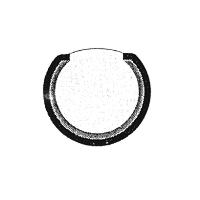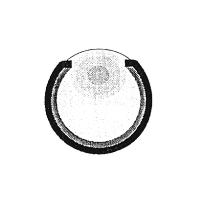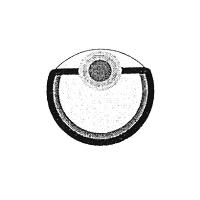
|
176 1% steps
|

|
362 1% steps
|

|
270 1% steps
|

|
225 1% steps
|

|
192 1% steps
|

|
308 1% steps
|

|
296 1% steps
|

Nilsson and Pelger took the eye sequence and broke it down into 1% changes. What I mean by a 1% change is that some value (such as a length, or a protein concentration) got 1% larger or smaller. For example, if some value has to double, then the doubling is considered to be 70 steps. (Mathematically, 1.01 to the 70th is about equal to 2.)
They concluded that the whole sequence, as shown, required 1829 steps, as follows:

|
176 1% steps
|

|
362 1% steps
|

|
270 1% steps
|

|
225 1% steps
|

|
192 1% steps
|

|
308 1% steps
|

|
296 1% steps
|

Total: 1829 1% steps.
There is a science called population genetics, and it has mathematical formulae for how quickly favorable genetic changes can spread throughout a population of sexually reproducing creatures. From these formulae, Nilsson and Pelger concluded that the 1829 steps could happen in about 350,000 generations.
In real life, an eye could evolve a little more quickly than that, or more slowly. It would depend on how much the specific creatures were being pressured to change, and on whether vision was relevant to their lifestyle.
If one year equals one generation, then a fairly good eye could evolve in maybe a third of a million years. It is thought that animal life has been on earth for at least 600 million years. That is certainly enough time for eyes to have evolved many times over.
In fact, taxonomists say that eyes have evolved at least 40 different times, and and possibly as many as 65 times. There are 9 different optical principles that have been used in the design of eyes and all 9 are represented more than once in the animal kingdom. Why so many? Well, because there was time.